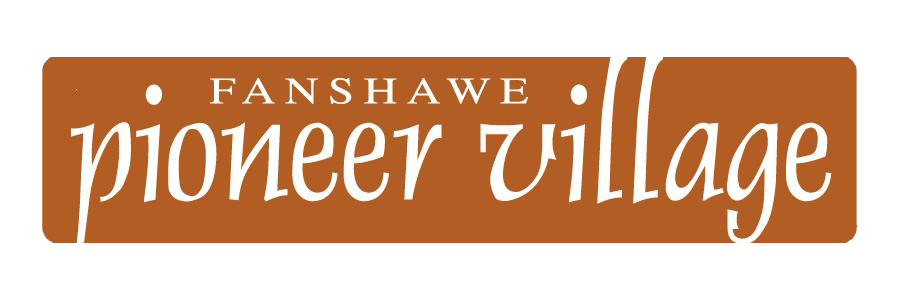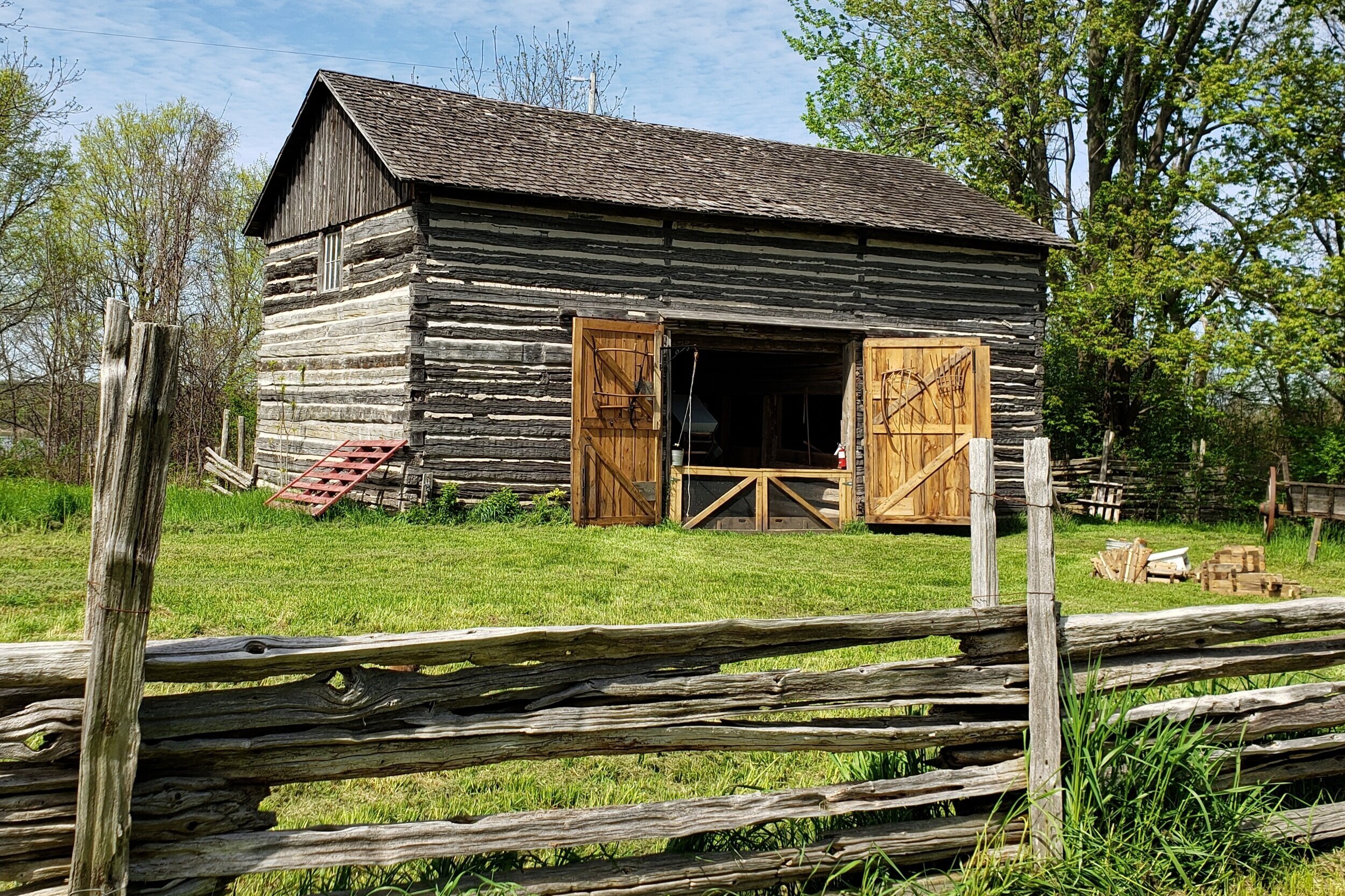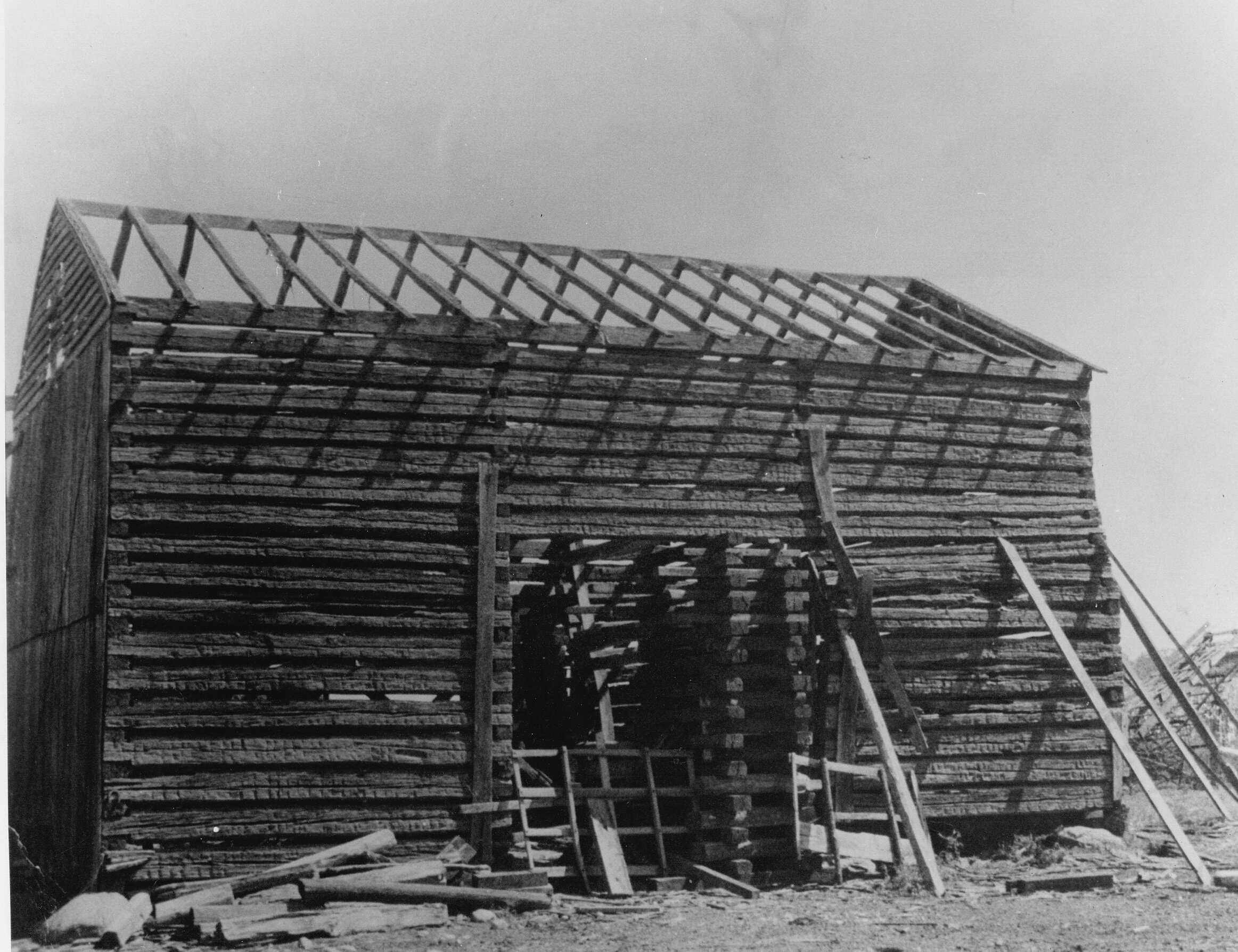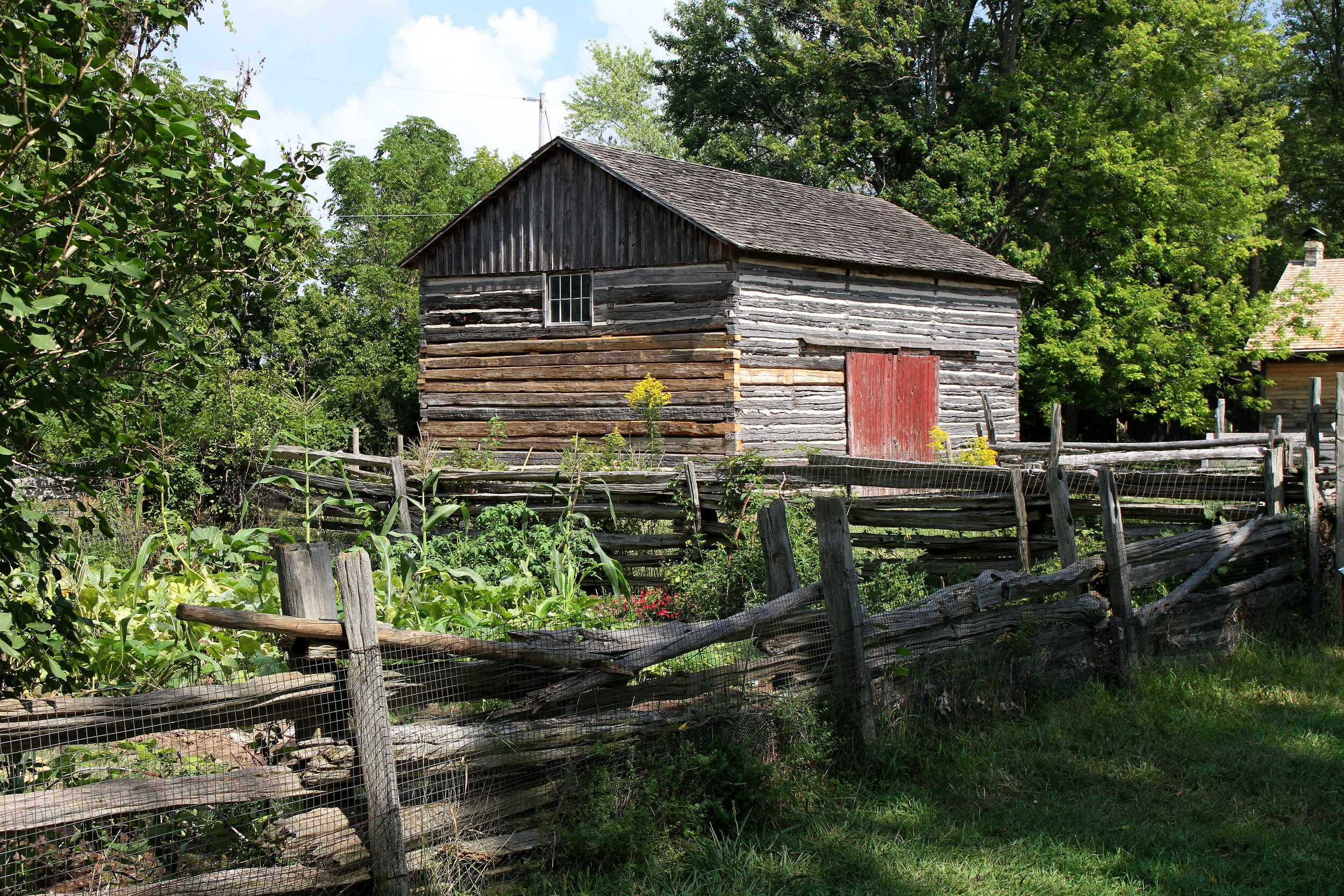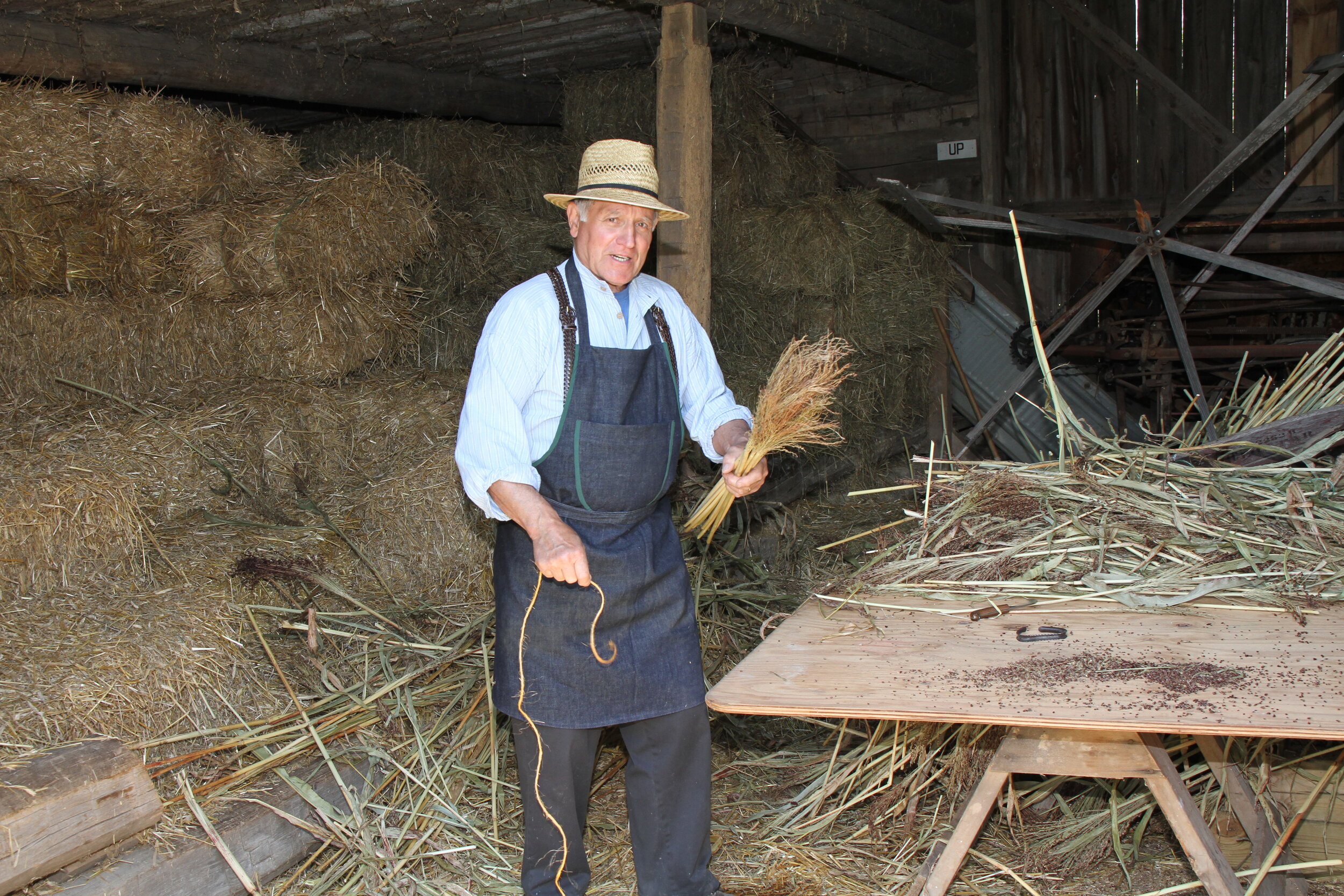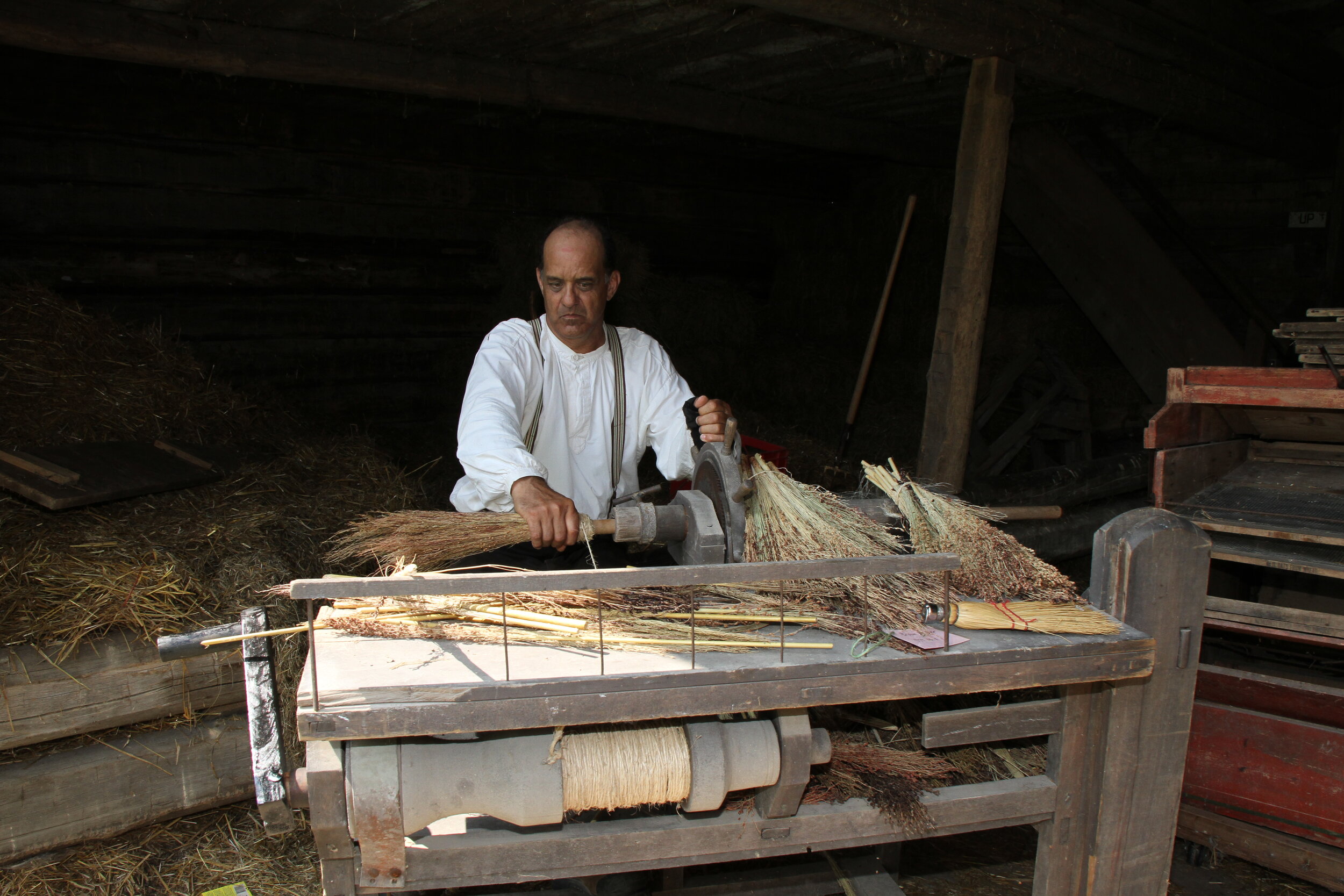Colbert Log Barn
Original Building
West Nissouri Township
Middlesex County
Circa 1840
The Colbert Log Barn is the oldest structure at the Village and one of the first buildings brought to the site. It is also a rare example of an early style of barn from Middlesex County. While little is known about who built the barn, or where, Robert Berry is credited with raising the barn in about 1840. After 1890, the barn was dismantled and moved from its original location to the Colbert family farm in West Nissouri Township, near Thorndale. It was used to store hay until it was sold to the Village in 1960 for $200.
The Colbert Barn is forty feet long by thirty feet wide and eighteen logs high. It has survived both a move from its original site and its re-erection at the Village. It is a testament to the workmanship and skill of the original builders who constructed it with simple tools.
Over ninety rock elm logs were used in building the barn, all of uniform length, diameter and straightness. This indicates that a great stand of rock elm trees was readily available to the barn’s builders. Today, it would be difficult to find such a reserve of rock elms as many died of Dutch Elm Disease after World War Two.
Farming
During the first half of the 19th century agriculture was seen primarily as a means to feed one’s own family. To feed a family of four at least three acres of cleared land was required. Wheat, potatoes, and vegetables were often planted as land was cleared. Subsistence farming provided both the food and resources necessary to become self-sufficient.
A homestead consisted of a house, a work yard, a barn, and outbuildings, such as a summer kitchen or smokehouse. Barns could house livestock, provide a threshing floor, or store the harvest.
Many farmers attempted to implement farming practices similar to those they used in their homelands. They would also incorporate lessons shared with them by local Indigenous populations and those who had already established themselves.
The work required for survival, along with the isolation people experienced, made co-operation essential. Work bees called on neighbours to help with large projects, creating a sense of community. They were also social opportunities. A barn raising usually brought together around 100 men, while women prepared a communal meal. In the evening there would be dancing and socializing.
Building restoration supported by Community Infrastructure Improvement Fund, Federal Economic Development Agency for Southern Ontario.
